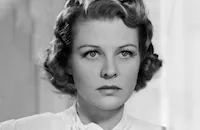Four Girls in White

Brief Synopsis
Cast & Crew
S. Sylvan Simon
Florence Rice
Una Merkel
Ann Rutherford
Mary Howard
Alan Marshal
Film Details
Technical Specs

Synopsis
Deciding that the nursing profession presents a wonderful opportunity to corral a prosperous husband, Norma Page enrolls in a nursing program headed by Miss Tobias. Other new recruits to the program at Maitland Hospital are Norma's sister Patricia, Mary Forbes, a young mother, and Gertie Robbins. Soon after starting her job at the hospital, Norma dates Dr. Stephen Melford, the brilliant resident physician. However, when Stephen foresakes a lucrative private practice for a life of public service, Norma breaks off the relationship. Norma's next quarry is wealthy playboy Robert Maitland, a descendant of the hospital's founder, who is admitted to the hospital after being shot by a jealous dancer. Following his recuperation, Robert checks out of the hospital without saying a word to Norma. When Norma sees Robert leaving, though, she immediately hands her patient over to Mary, who leaves her post to cover for Norma, so that she can bid Robert farewell. Norma succeeds in cajoling an invitation from Robert for her and Pat to join him on his father's yacht, but her act has dire consequences for Mary, who is reprimanded and denied her vacation for leaving her post. Rather than confess that she was responsible for Mary's dereliction of duty, Norma joins Pat and Robert on the yacht, but when Robert falls in love with Pat, Norma decides to return to the hospital. Shortly thereafter, Mary is killed by an insane patient, and the other nurses resent Norma for letting Mary take the blame for her misdeed. Norma is on the verge of resigning when she joins an emergency team that is speeding to administer aid to the victims of a train wreck. Norma proves her mettle as, amid a raging storm, she endangers her own life to assist the injured. Norma's devotion to duty regains Stephen's love and proves her worthy of her title.

Director

S. Sylvan Simon
Cast

Florence Rice

Una Merkel

Ann Rutherford

Mary Howard

Alan Marshal

Kent Taylor

Buddy Ebsen

Jessie Ralph

Sara Haden

Phillip Terry

Tom Neal
Margaret Armstrong
Edward Earle
James C. Morton
George Guhl
J. Louis Smith
Shirley Coates
Kathryn Sheldon
Joy Anderson
Maxine Marx

Lee Phelps
Minerva Urecal
Harry Tyler
Bruce Sidney
Paul Parry
Harry B. Stafford
Jo Ann Sayers
Mariska Aldrich
Ed Thomas
Harold Schlickenmayer
Olive Hatch
Claire Owen
Jean Carmen
Eileen Elliott
Florence Mannix
Judith Rutherford
Jules Cowles
Baldwin Cook
Crew
Peter Ballbusch
George Boemler
Endre Bohem
Nathalie Bucknall
Cedric Gibbons
Nat Levine
Stan Rogers
Sandy Roth
Douglas Shearer
Leonard Smith
Dolly Tree
Edwin B. Willis
Dorothy Yost

Film Details
Technical Specs

Articles
Four Girls in White -
This gives nursing dramas, running from perhaps Night Nurse (1931) to Vigil in the Night (1940), an anthropological weight, as "topical" movie trends tend to accrue years after their ripped-from-daily-life salience has dissipated. If this wasn't exactly "how it was," then it was certainly how Americans conceived and daydreamed about it, in its most basic essentials. With Four Girls in White, the practical and procedural aspects of the nurse's life are front and center: the modern nursing college we land in, alongside newbies Norma (Florence Rice), Gertie (Una Merkel), Patricia (Ann Rutherford) and Mary (Mary Howard), is strictly sleepaway - young mothers must leave their babies behind for months at a stretch - and run like a boot camp, where the sassy maidens are tirelessly trained in technique and relentlessly schooled in decorum and manner, less one of them ever besmirch their trade with an unprofessional demeanor or a mistake or a moment of unsureness.
In fact, director S. Sylvan Simon's film seems to be 50% comprised of montages, collages of activity from perfecting hospital corners to assisting surgery, as if the movie itself was a kind of training film. It's certainly something of a medical-flag-waver, however much it eventually gets subsumed in melodramatic intrigue: Norma, we learn early, has come to nursing school only in order to meet and marry a doctor, and her machinations in this regard not only lead to her own disillusionment with dedicated doc Alan Marshal, but eventually a career disaster for Mary (who reluctantly tried to help Norma shirk her duties one night) and thereafter her suicide. Along the way Norma has to balance responsibilities for her little sister Patricia, and the fact that both at various points are in the tractor beam of a hypochondriac millionaire looking for a trophy wife. As comic-relief Gertie gets wooed by Buddy Ebsen's buffoonish male orderly, Rice's Norma eventually pays her penance, and becomes a genuine heroine in a rather alarming and elaborate trainwreck scenario.
The main subgenre motifs are all there, chief among them the conflicts that arise within the nursing sphere between pure-hearted career motivations and the intimacy with male patients and doctors - why work so hard when you can marry off? Nurses have been routinely portrayed as either sex toys or gold diggers, but in Four Girls the women's point of view is held fast, and the men are simply reactive to the protagonist's desires and learning curves. It's a woman's world, even as it boils along underneath the dominant sphere of patriarchy.
Rice herself, who retired just four years later, is a rather colorless heroine - rather Ann Harding-ish, as well as a touch Ellen DeGeneres-y but with no humor - and Four Girls otherwise suffers from a lack of serious star power. Merkel and crotchety head nurse Jessie Ralph try their best, but the small army of bland non-star actresses and look-alike male leads all meld together in the memory. The milieu's ideological force and structure is the main character here; the white-on-white teaching hospital seems to revolve much more around the staff than around the patients, who are rarely glimpsed, and the characters' moral crises, churning and doubling back all within 73 minutes, are manifestly paradigmatic, not specific. The nurses here are Everynurse, and their choices and problems were every woman's during the Depression.
The big difference, and the film's ethnographic raison d'etre, resides in the bumps and shoals of nursing itself, which was still an almost exotic professional lifestyle that tantalizingly for many American women held real life-and-death power in its hands and yet stood outside the mainstream of domestic life, where a woman's daily agenda revolved around her husband. Co-written by RKO genre scripter Dorothy Yost, veteran of no less than five Fred Astaire-Ginger Rogers musicals, Four Girls in White is a B movie in a subgenre that no longer exists, exploring a topic that has long since become passé, and made for a powerful female audience that has long ago ceased to participate meaningfully in the movie marketplace. You could think of it as an orphan to history, a piece of Americana without which any vestige of its cultural moment would vanish forever.
By Michael Atkinson

Four Girls in White -
Quotes
Trivia
Notes
Working titles for this film were Women in White and Diary of a Nurse. Although Hollywood Reporter pre-release news items listed Ann Morriss, Barbara Bedford and Albert Morin in the cast, and noted that nurses Anne Crist, Ethel Schremser and Dorothy Ainsworth were signed to the picture, their appearance in the released film has not been confirmed. A Hollywood Reporter news item published on the day that production on the film began indicated that Gene Raymond was set for the male lead. Hollywood Reporter news items also note that the film marked producer Nat Levine's first picture for M-G-M; and that five-year-old Joy Anderson replaced Cammie King in the part of Susan when King contracted chicken pox after one day's work in a hospital sequence.














